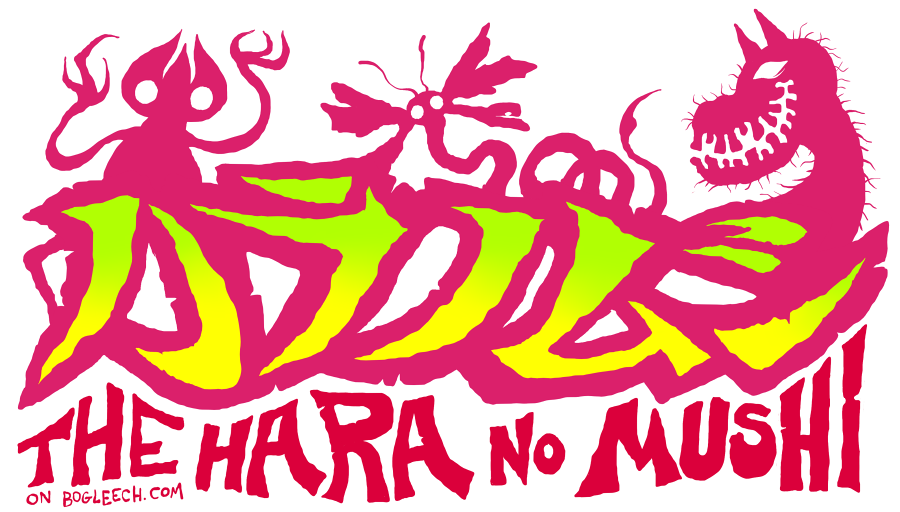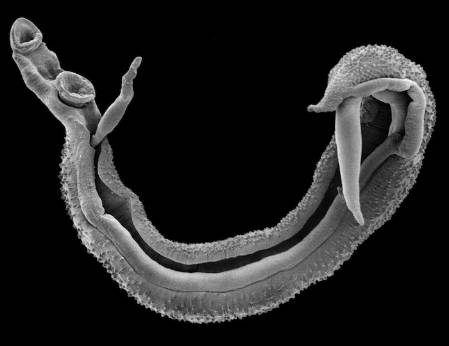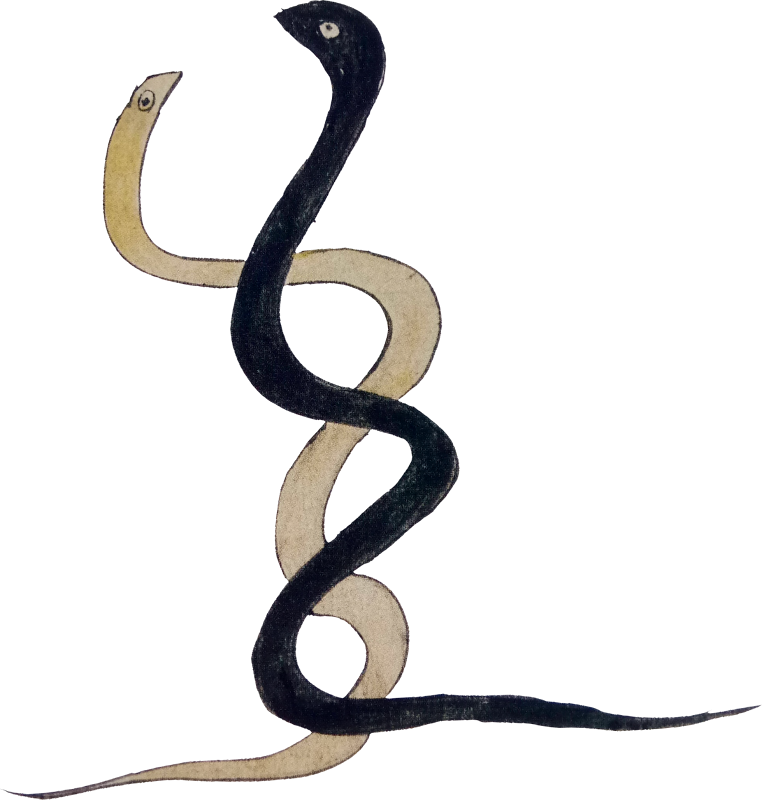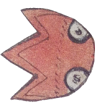
DAY ELEVEN: ASENOMUSHI
("Sweat Bug")
Written by Jonathan Wojcik, Researched and Translated by Rev Storm
Design Review:
Not much to discuss here; it's a pair of worms intertwined, just like the description, but it's a cute concept and the two different colors give them a more interesting look than if they were identical.TODAY'S REAL WORLD PARASITE:
Schistosoma

These parasites would not have been discovered for many decades after the publication of the Harikikigaki, since even as adults they're invisible to the naked eye! These parasitic flatworms, or "flukes," begin their life like many flukes in the body of an aquatic snail, but eventually break free as tadpole-like larvae called cercariae.
Cercaria infect humans exposed to unclean water by burrowing directly through the skin, and enter the blood vessels, where they will travel to the lungs, then to the heart, then the liver where they reach their mature form, then ride the bloodstream to the veins serving the intestines and rectum.
Whereas most other flukes or trematodes are hermaphrodites, these "blood flukes" are extremely dimorphic. The male is much larger, and he's the one who actually feeds on blood. When the thinner, more whiplike female finds a male, she nestles against his flat underside and he folds shut around her, basically like a hot dog bun. Unable to feed on her own, she receives the host's blood directly through her mate, and he even passes chemicals onto her that complete her development. The two typically remain together until their death and will search for one another if separated, though if one dies first they have been known to "remarry," and rare "divorces" have been observed between two otherwise healthy, living flukes for indeterminate reasons.
The cute little couple actually cause no known symptoms of their own, and we could easily get by just fine playing host to these lovebirds...if not for the eggs. The thousands, and thousands, and thousands of eggs they pour and pour into the host bloodstream, covered in a tough, spiny shell to protect them from the constant assault of our immune system. We all know how it feels when anything is under a constant assault by our immune system; like garbage. Symptoms are very much like a flu that never goes away, and as the prickly eggs can pile up, cluster or even accidentally break out of the veins, they can cause swelling and agitation of vital organs that the body treats like basically the apocalypse.
It's a painful, nauseating, sometimes deadly ordeal, and it can all just come from touching water that has been contaminated by those very same eggs, which typically leave the host body through their urine or their feces, and by feces, we mean constant, bloody diarrhea.


































